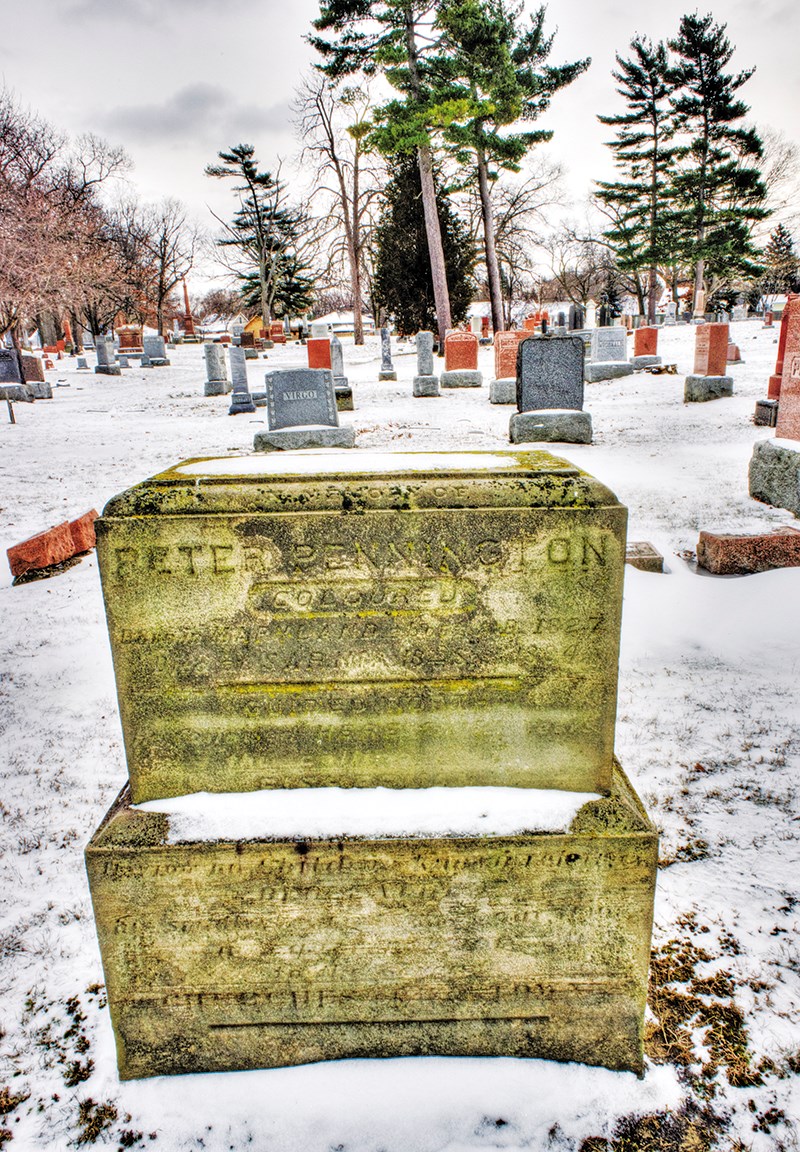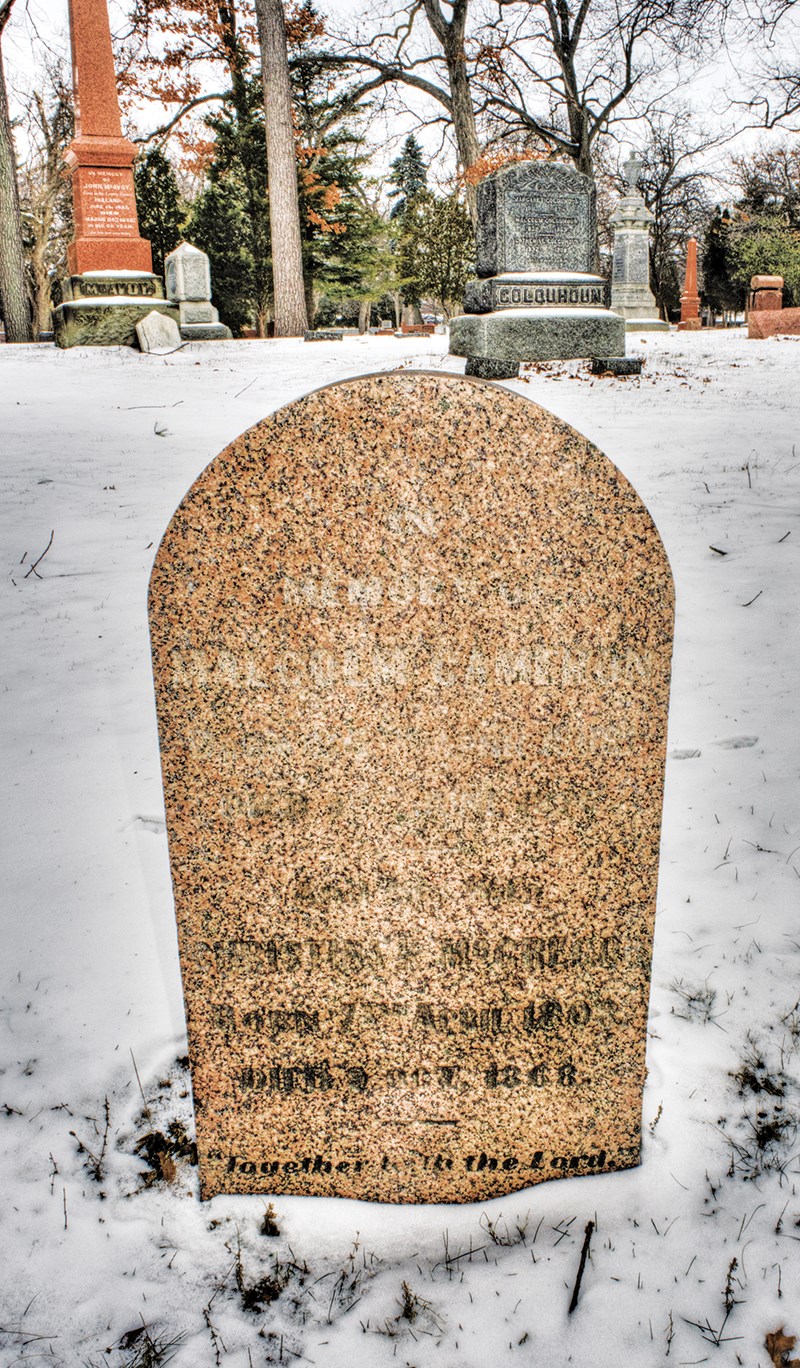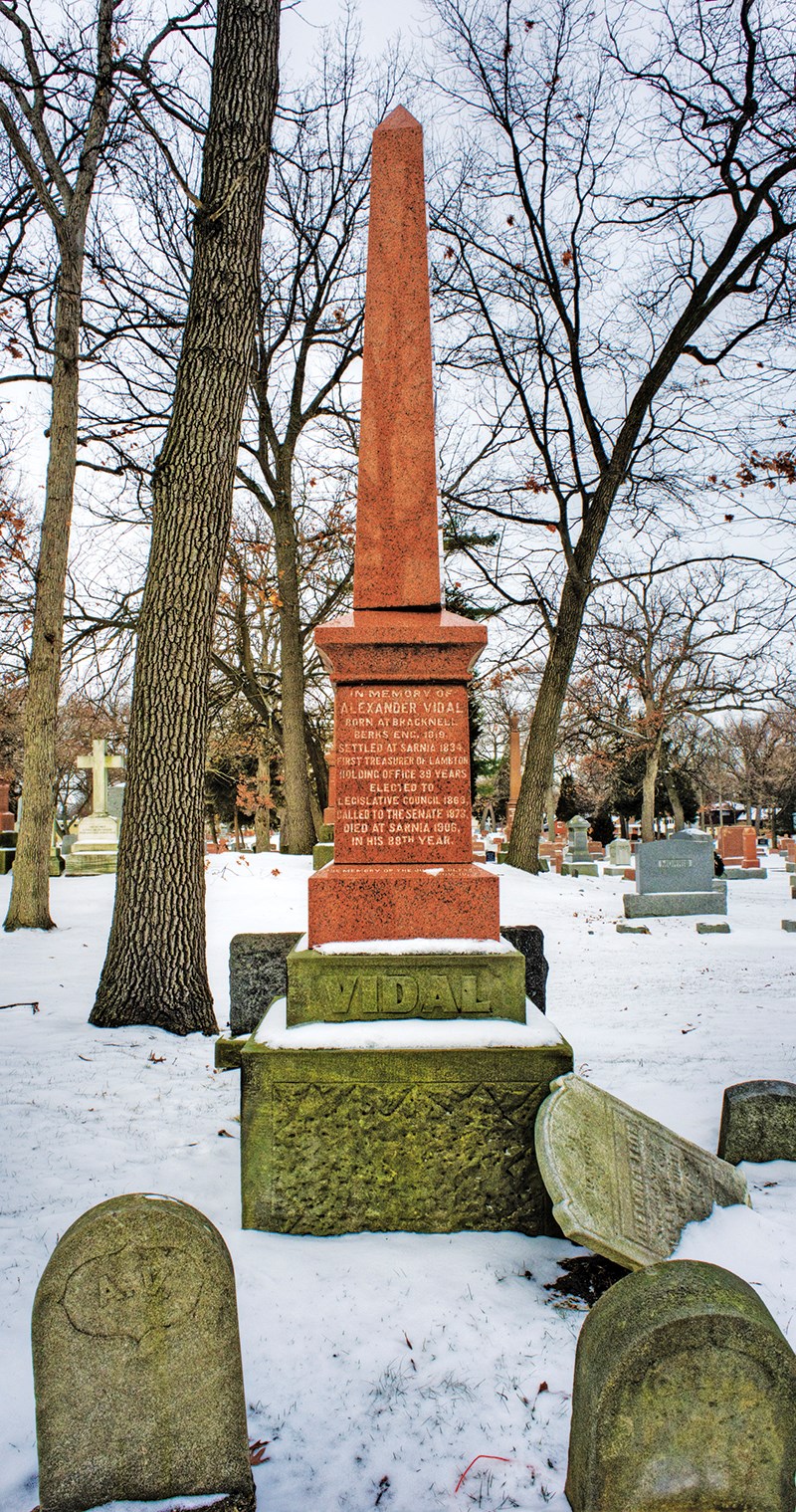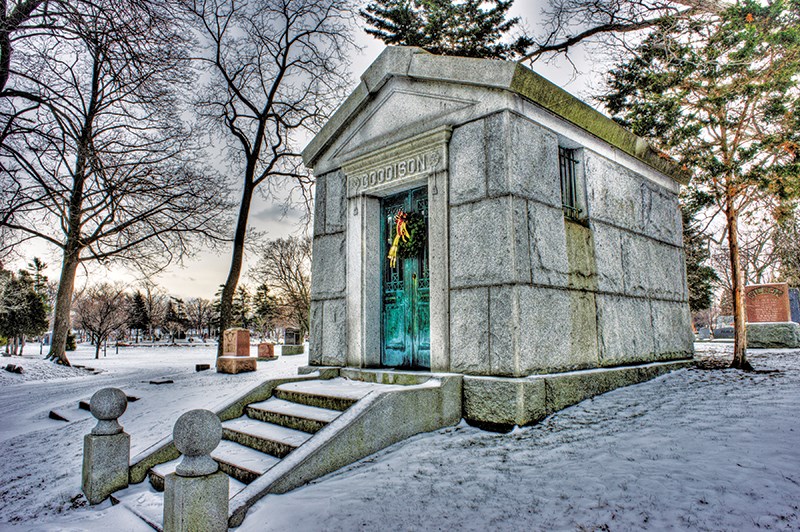George Mathewson
Peter Pennington had a bounty of $800 placed on his head when he and a group of other black slaves escaped from their Maryland masters in 1856.
Fleeing north on the “Underground Railroad,” Pennington made his way to Sarnia, became a fisherman and apparently got on well.
When he died in 1884 he left an estate worth $1,000, or about $25,000 in today’s money, which was more than the reward his owner had offered for his return.
We don’t know what Peter Pennington was thinking when he made his run to Canada and freedom. But he might be surprised to know he’s listed today among the “Notable People” buried in Lakeview Cemetery, along with various civic leaders, a lieutenant governor and a prime minister.
Pennington is one of the 31,500 permanent residents of Lakeview, which opened in 1879 in open agricultural fields well north of the city limit of Exmouth Street.
“It was outside Sarnia then and it was all farmland so you could still see the lake from here,” said Trevor Taylor, Lakeview’s marketing co-ordinator.
“Since 1879 a lot of interesting people have been buried here.”
Indeed. Wandering among the graves you’ll find artists and athletes, surgeons and seaman, plumbers and politicians.
Founding fathers Malcolm Cameron and Captain Richard Vidal are here. So are 50 members of the Mackenzie clan in a plot crowned by the tomb of Alexander Mackenzie, Canada’s second prime minister.
The dead do tell tales. Some headstones reveal tragic personal stories, such as the young woman who fell through the ice on Sarnia Bay holding her infant child, or the five sailors who drowned in the great Lake Huron storm of 1913, their identities still a mystery today.
Graves from half a dozen other cemeteries in the city’s core were relocated to the non-denominational Lakeview when it opened, so some stones actually predate 1879. Many, sadly, are badly weatherworn and becoming hard to read.
“Unfortunately they’re made of limestone and they’re fading,” Taylor said. “It’s lost history.”
Lakeview’s imposing mausoleum with its classical Doric columns has been designated under the Ontario Heritage Act. All of its interior crypts are full, holding the remains of people who didn’t want to be buried in the ground.
Taylor said Sarnians are increasingly eschewing traditional burials in favour of cremation.
The cemetery has its own on-site crematorium and in December opened a fifth columbarium to house the urns and ashes of loved ones.
Because full-body burials require more land, the shift to cremation has also increased the active lifespan of the cemetery, Taylor said.
“We believe we’ll be here another 70 to 80 years.”



